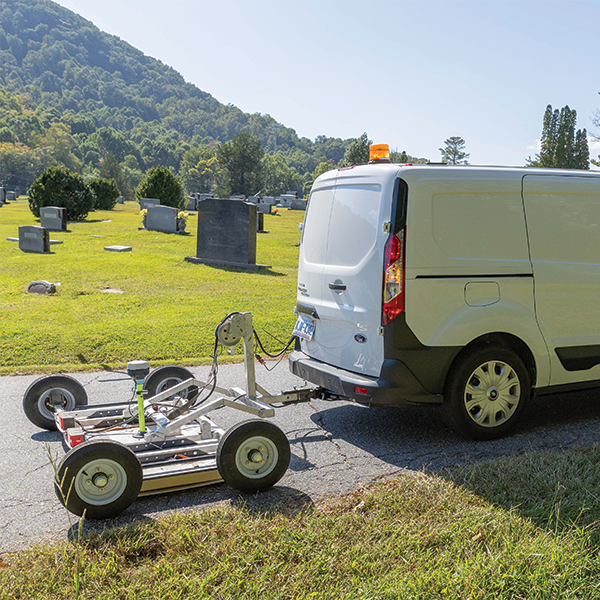Ground Penetrating Radar: A Vital Tool for Subsurface Object Detection and Beyond
Ground penetrating radar is important for several reasons:
Enhancing Detection Capabilities with Our GPR Detection Services
GPR provides exceptional results when attempting to discover voids and other anomalies beneath the surface. The technology can penetrate rock, soil, concrete, clay, plastic, water, wood and other materials. The pulses reach varying depths and offer flexibility to adapt to unique ground compositions.

Precision Geophysical Surveys Powered by Our Advanced GPR Technology
When conducting geophysical surveys, GPR provides access to vital data that is invaluable when identifying and locating groundwater, bedrock, strata layers, saltwater infiltration and sinkholes. It can also measure the thickness of ice in colder climates.
Delivering Accurate Structural Integrity Assessments via GPR
GPR data can help assess structural integrity and discover damage to a building’s foundation. It is also useful when performing bridge deck analyses, as it can locate cracks, voids and other deficiencies that indicate deterioration. Engineers can use this information when identifying appropriate repairs and remedies.
Aiding Environmental Conservation Efforts
Using GPR services enables geologists and environmentalists to find toxic materials and other hidden ecological hazards. The data can also provide insight into the direction that certain types of contamination are moving and stop the migration in an effort to prevent damage to the nearby plant and animal life.

Boosting Mining Safety with GPR: A Commitment to Worker Protection
GPR scans can locate faults and fractures in rocks, alerting miners to changes that could impact their drilling activities. They can use this information to create less dangerous and more project-compatible underground mines and tunnels.
Accurate Cemetery Mapping with GPR: Uncovering the Unseen
GPR technology is adept at finding underground soil disturbances that may indicate the presence of underground graves. This data is helpful to researchers looking for unmarked burial sites or professionals plotting a layout for a cemetery.
Ground Penetrating Radar: A Vital Tool for Subsurface Object Detection and Beyond
Ground penetrating radar is important for several reasons:
Enhancing Detection Capabilities with Our GPR Detection Services
GPR provides exceptional results when attempting to discover voids and other anomalies beneath the surface. The technology can penetrate rock, soil, concrete, clay, plastic, water, wood and other materials. The pulses reach varying depths and offer flexibility to adapt to unique ground compositions.

Precision Geophysical Surveys Powered by Our Advanced GPR Technology
When conducting geophysical surveys, GPR provides access to vital data that is invaluable when identifying and locating groundwater, bedrock, strata layers, saltwater infiltration and sinkholes. It can also measure the thickness of ice in colder climates.
Delivering Accurate Structural Integrity Assessments via GPR
GPR data can help assess structural integrity and discover damage to a building’s foundation. It is also useful when performing bridge deck analyses, as it can locate cracks, voids and other deficiencies that indicate deterioration. Engineers can use this information when identifying appropriate repairs and remedies.
Aiding Environmental Conservation Efforts
Using GPR services enables geologists and environmentalists to find toxic materials and other hidden ecological hazards. The data can also provide insight into the direction that certain types of contamination are moving and stop the migration in an effort to prevent damage to the nearby plant and animal life.

Boosting Mining Safety with GPR: A Commitment to Worker Protection
GPR scans can locate faults and fractures in rocks, alerting miners to changes that could impact their drilling activities. They can use this information to create less dangerous and more project-compatible underground mines and tunnels.
Accurate Cemetery Mapping with GPR: Uncovering the Unseen
GPR technology is adept at finding underground soil disturbances that may indicate the presence of underground graves. This data is helpful to researchers looking for unmarked burial sites or professionals plotting a layout for a cemetery.





